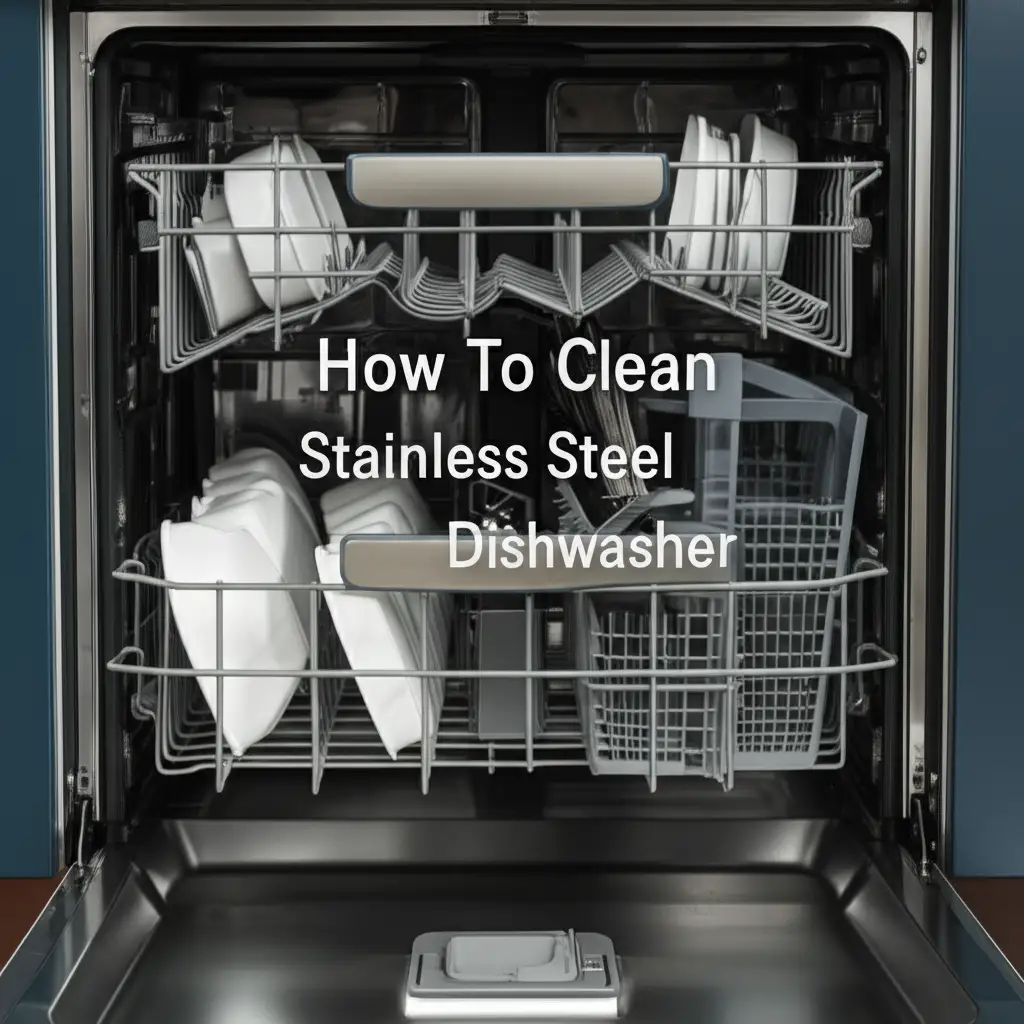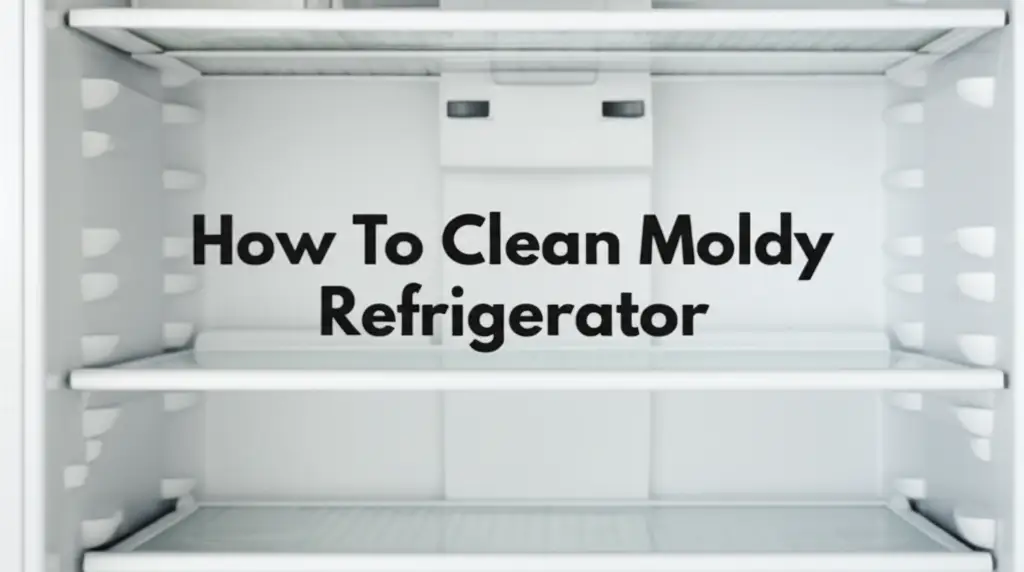· Appliance Care · 18 min read
Keep Your Dryer Drum Clean and Efficient

Keep Your Dryer Drum Clean and Efficient
My dryer works hard, but do I give it the care it deserves? Many people overlook cleaning the inside of their dryer drum. This simple task can prevent issues, improve performance, and keep your clothes truly clean. A dirty dryer drum can leave marks on clothes, reduce drying efficiency, and even pose a safety risk. This guide helps you understand how to clean inside dryer drum effectively. We will explore methods for general grime, stubborn stains, and lingering odors. I will share practical, easy steps to ensure your dryer performs its best for years.
Takeaway
Keeping your dryer drum clean is crucial for safety and efficiency. Regular cleaning prevents lint buildup and stains. It also helps your dryer last longer.
- Always unplug your dryer before cleaning.
- Remove lint thoroughly from the trap and drum.
- Use mild cleaners for general wiping.
- Address specific stains like crayon, gum, or ink with targeted methods.
- Clean the moisture sensor for accurate drying.
- Clean the dryer vent regularly for safety.
How do I clean inside dryer drum?
To clean inside your dryer drum, first unplug the appliance. Remove any lint from the lint trap. Wipe down the drum interior with a damp cloth and a mild all-purpose cleaner. For stubborn stains or odors, use specific solutions like rubbing alcohol or white vinegar. Ensure the drum dries completely before using the dryer again.
Why Cleaning Your Dryer Drum Matters for Safety and Efficiency
Cleaning your dryer drum is more important than you might think. A dirty drum affects clothes and appliance health. Lint buildup is a major fire hazard. It restricts airflow and causes the dryer to overheat. This creates a dangerous situation in your home.
Proper cleaning makes your dryer work better. When the drum is clean, air flows freely. Clothes dry faster and use less energy. This saves you money on utility bills. A clean dryer also lasts longer. It reduces wear and tear on the machine’s components.
Dirty drums can transfer lint, residue, or stains onto clean clothes. This ruins fresh laundry. Imagine pulling out a supposedly clean shirt only to find it covered in grime. Regular cleaning prevents this problem. It keeps your clothes fresh and clean.
I know I appreciate my clothes coming out spotless. A clean drum ensures that. It is a simple habit with big rewards for your home and laundry. Prioritize this task for a safer and more efficient laundry routine.
Gathering Your Cleaning Arsenal: Essential Tools and Solutions
Before you start cleaning, gather your supplies. Having everything ready makes the job easier. You will need a few common household items and some specific cleaning agents. These tools help you tackle different types of dirt and stains inside the dryer drum. Start with safety in mind.
First, you need a vacuum cleaner with attachments. This helps remove loose lint from crevices. A small brush or old toothbrush is also useful for tight spots. Next, prepare your cleaning cloths. Microfiber cloths work best because they are absorbent and do not leave lint behind. Keep several on hand for different stages of cleaning.
For general cleaning, you will need a spray bottle. Fill it with a mixture of water and a mild all-purpose cleaner. White vinegar is an excellent natural alternative. Rubbing alcohol is useful for greasy spots or sticky residues. A magic eraser can also be very effective for scuffs and marks.
For specific stains, you might need special products. For instance, mineral spirits or specific stain removers are good for crayon marks. Goo Gone works well for gum. Nail polish remover can help with ink. Always test these in an inconspicuous area first. This prevents any damage to the drum finish.
Gloves protect your hands from cleaning solutions. A small bucket for rinsing cloths is also helpful. Having these items ready ensures a smooth and effective cleaning process. Prepare your arsenal, and you are ready to tackle the dryer drum.
Step-by-Step Guide to General Dryer Drum Cleaning
Cleaning your dryer drum does not have to be a big chore. Follow these steps for a thorough general cleaning. This routine keeps your dryer in top shape. Regular cleaning prevents issues and ensures your clothes come out fresh.
Pre-Cleaning Preparations
First, ensure safety. Always unplug your dryer from the power outlet. This prevents accidental starts. It also protects you from electric shock. Safety is my top priority when working with appliances.
Next, empty the dryer drum completely. Remove any clothes, lost socks, or foreign objects. Open the lint trap and pull out all accumulated lint. This initial step clears the way for a deeper clean. It also removes a lot of the dirt you will be tackling.
Initial Lint Removal
Use your vacuum cleaner with a brush attachment. Carefully vacuum the entire inside of the dryer drum. Pay close attention to crevices and seams. Lint hides in these spots. Also, vacuum around the lint trap housing. This area collects a lot of fine dust.
A long, flexible vacuum attachment can reach deep into the lint trap duct. This removes more hidden lint. I find this step crucial for preventing future lint buildup. This initial vacuuming removes the bulk of loose debris. It prepares the drum surface for washing.
Wiping Down the Drum
Mix equal parts white vinegar and water in a spray bottle. You can also use a mild all-purpose cleaner diluted with water. Spray the interior of the dryer drum lightly. Do not oversaturate the drum. Excess liquid can seep into components.
Wipe down the entire drum surface with a clean microfiber cloth. Work in small sections. Pay attention to any visible grime or residue. The vinegar solution helps dissolve odors and light stains. If you used an all-purpose cleaner, follow its specific instructions.
Rinse your cloth frequently and re-wipe with plain water. This removes any cleaning solution residue. Ensure the drum is completely clean. A final wipe with a dry cloth helps remove all moisture. This prepares the drum for the next step or for drying.
Cleaning the Moisture Sensor
Many modern dryers have moisture sensors. These metal strips detect when clothes are dry. They are usually located inside the dryer drum, near the lint trap. Over time, fabric softener residue or lint can coat these sensors. This makes them inaccurate.
To clean the sensors, locate the two or three metal strips. Use a clean cloth dampened with rubbing alcohol. Gently wipe the sensors clean. Do not scrub too hard. This removes any film that interferes with their operation. Cleaning these sensors helps your dryer dry clothes more efficiently. It prevents over-drying, which saves energy and protects your fabrics. For more detailed instructions specific to certain models, you might find it helpful to consult resources on how to clean moisture sensor on Samsung dryer or similar guides for your dryer brand.
After cleaning, let the drum air dry completely. You can also wipe it dry with a clean, dry towel. This prevents moisture from lingering inside the appliance. A dry drum is essential before you plug the dryer back in.
Tackling Stubborn Stains: Crayon, Gum, Ink, and Beyond
Sometimes, a general cleaning is not enough. The dryer drum can suffer from stubborn stains. These often come from items left in pockets. Crayon, gum, or ink can melt or transfer onto the drum. I have dealt with these many times. Addressing these specific stains requires targeted solutions.
Removing Crayon Stains
Crayon marks are common and tricky. They melt and spread with heat. To remove crayon, first let the dryer cool completely. Scrape off any excess crayon with a plastic scraper or old credit card. Be gentle to avoid scratching the drum.
Next, dampen a cloth with mineral spirits or a product like WD-40. Rub the crayon marks. The oil in these products helps dissolve the wax. You might need to rub for a few minutes. For a detailed guide, you can check out how to clean crayon out of dryer. Once the crayon is gone, clean the area with a mild detergent and water. Finish by wiping with a clean, damp cloth to remove any residue.
Dealing with Gum Residue
Gum is incredibly sticky when hot. When it cools, it becomes brittle. The key to removing gum is often to re-harden it. You can do this by rubbing an ice cube over the gum until it freezes. This makes the gum easier to chip off.
Once frozen, carefully scrape off the hardened gum with a plastic scraper. Avoid sharp objects. After removing the bulk, any sticky residue can be treated. Apply a small amount of peanut butter or a commercial gum remover like Goo Gone to a cloth. Rub the sticky area. The oils in peanut butter help break down the gum’s stickiness. Wipe away residue with a damp cloth and mild soap. For more information, read about how to clean gum out of a dryer.
Erasing Ink Marks
Ink stains can transfer from pens left in pockets. These stains can be challenging. Start by dabbing the ink mark with a cloth dampened with rubbing alcohol. Isopropyl alcohol works well. Dab, do not rub, to avoid spreading the ink.
For tougher ink stains, try a small amount of nail polish remover (non-acetone is safer). Apply it to a cloth and dab the stain. Always test in an inconspicuous area first. After the ink is gone, wipe the area thoroughly with a damp cloth and mild soap. This removes any chemical residue. For specific techniques, learning how to clean pen ink out of a dryer can be very helpful.
Addressing Burnt-On Stains
Sometimes items can get scorched or burnt onto the dryer drum. This leaves dark, hard residue. To tackle these, first ensure the dryer is cool. Scrape off any loose material with a plastic scraper.
For the remaining burnt residue, mix a paste of baking soda and a little water. Apply the paste directly to the stain. Let it sit for 15-30 minutes. The baking soda acts as a mild abrasive and helps lift the grime. Gently scrub with a non-abrasive sponge or cloth. For severe cases, fine-grade steel wool (0000) can be used very carefully, but only on stainless steel drums and with light pressure. Always wipe thoroughly with a damp cloth afterward. For stubborn burnt areas, especially on metal components, consulting guides like how to clean burnt dryer grate might offer additional specific advice.
Other Common Stains
Sometimes dye from clothes or scuff marks appear. For dye transfer, try a solution of bleach and water on a white cloth (only if your drum is porcelain enamel and not stainless steel). For stainless steel, stick to non-bleach cleaners. A magic eraser can work wonders on scuffs or light stains. Remember to always clean the area thoroughly with soap and water after using strong cleaners. This ensures no residue transfers to your next load of laundry. Always ensure the dryer is completely dry before use.
Odor Elimination and Freshness Maintenance
A clean dryer drum is not just about appearance. It also means a fresh-smelling appliance. Sometimes, even after cleaning, lingering odors persist. These can come from mildew, damp clothes, or even residual cleaning products. I have experienced this many times. Tackling odors effectively keeps your laundry smelling truly clean.
One of the best natural deodorizers is white vinegar. After cleaning the drum, if an odor remains, dampen a clean cloth with undiluted white vinegar. Wipe down the entire interior of the drum again. Vinegar neutralizes odors. It does not just mask them. The vinegar smell will dissipate quickly as it dries.
Baking soda is another powerful odor absorber. After wiping down the drum, sprinkle a generous amount of baking soda inside the drum. Close the dryer door and let it sit overnight. The baking soda will absorb any lingering smells. In the morning, vacuum out the baking soda completely. This method is especially useful for musty or damp smells.
For a fresh scent, you can run a quick cycle with a few old towels. Add a fabric softener sheet or a few drops of essential oil (like lemon or lavender) to the towels. Tumble them for about 10-15 minutes. This helps distribute a pleasant aroma throughout the drum. Do not overdo the essential oils; a few drops are enough.
Prevention is also key for freshness. Do not leave damp clothes in the dryer after a cycle. This creates a prime environment for mildew and odors. Transfer clothes immediately to prevent smells from settling into the drum. Also, ensure your laundry room is well-ventilated. Proper airflow helps reduce humidity and prevents musty smells in the area. Keeping the dryer door ajar when not in use can also help air circulate and prevent odors. This simple habit keeps your drum fresh.
Don’t Forget the Lint Trap and Exhaust Vent! (Holistic Dryer Care)
Cleaning the inside of your dryer drum is a crucial step. However, it is only one part of total dryer maintenance. For a truly safe and efficient dryer, you must also pay attention to the lint trap and the exhaust vent system. These components are vital for airflow and fire prevention. Overlooking them can lead to serious problems. I always emphasize this to friends.
The Lint Trap’s Role
The lint trap is your first line of defense against lint buildup. It catches most of the lint from your clothes. This prevents it from entering the dryer’s exhaust system. A clogged lint trap reduces airflow dramatically. This makes your dryer work harder and longer. It also increases the risk of overheating.
I always recommend cleaning the lint trap after every single load of laundry. This simple habit takes only a few seconds. Pull out the screen and wipe away the lint. Sometimes, a thin film can build up on the screen from fabric softener. This film is not always visible. It can still restrict airflow. To remove it, scrub the lint screen with a brush, warm water, and a little liquid detergent. Rinse it thoroughly and let it air dry completely before putting it back. A clean lint trap ensures maximum airflow.
Importance of Vent Cleaning
The dryer exhaust vent is where hot, moist air, along with any lint that bypasses the trap, exits your home. Over time, lint accumulates in this vent. This buildup is a significant fire hazard. It also makes your dryer extremely inefficient. A blocked vent can cause your dryer to overheat and potentially ignite the lint.
You should clean your dryer vent regularly. The frequency depends on dryer usage. For average use, aim for at least once or twice a year. You can use a dryer vent cleaning brush kit. These kits come with long, flexible rods that connect to a drill. They extend into the vent pipe to dislodge lint. You can clean the vent from the back of the dryer or from the outside wall termination. For methods that involve cleaning from the outside, you can find specific guidance on topics such as how to clean dryer vent on roof or more general advice on how to clean dryer vent from outside with drill.
Professional dryer vent cleaning services are also an option. They have specialized equipment to ensure a thorough cleaning. Neglecting the dryer vent is a leading cause of household fires. Do not skip this critical maintenance step. It protects your home and your family. Proper dryer care extends beyond just the drum. It involves all parts of the system working together.
Frequency and Best Practices for a Clean Dryer Drum
How often should you clean the inside of your dryer drum? The answer depends on how much you use your dryer. For general cleaning, I recommend a routine. Regular maintenance prevents major problems. It also keeps your dryer efficient and your clothes clean.
For light to moderate dryer use (a few loads per week), aim to clean the drum every 3 to 6 months. This general wipe-down removes lint and light residue. For heavy use (daily loads or large family laundry), consider cleaning the drum every 1 to 3 months. Frequent cleaning is a good habit. It stops grime from building up.
Beyond these regular intervals, perform spot cleaning as needed. If you notice a stain, address it immediately. Do not let it sit or run more loads. Prompt action prevents the stain from setting or transferring to other clothes. A quick wipe-down after a particularly dirty load, like muddy work clothes, is also a good idea.
Here are some best practices for maintaining a clean dryer drum:
- Check pockets: Always empty all pockets before putting clothes in the dryer. This prevents crayons, pens, gum, and other items from causing stains. This is my number one rule.
- Shake out clothes: Before transferring clothes from the washer to the dryer, shake them out. This removes loose lint and hair. It reduces the amount of debris entering the dryer drum.
- Do not overload: Overloading the dryer reduces airflow. It also increases friction between clothes and the drum. This can rub off more lint and create scuff marks.
- Use proper detergent and fabric softener: Excessive use of liquid fabric softener can leave a sticky residue in the drum and on moisture sensors. Use recommended amounts.
- Ventilation: Keep your laundry area well-ventilated. Good air circulation helps prevent moisture buildup inside the dryer. This reduces the chance of mildew odors.
- Periodic deep cleaning: Beyond the drum, remember the lint trap (every load) and the exhaust vent (at least once or twice a year). These are vital for dryer performance and safety.
By following these frequencies and best practices, you ensure your dryer drum stays clean. This proactive approach saves you time and effort in the long run. It also protects your investment and keeps your home safe. A clean dryer drum means clean, fresh clothes every time.
FAQ Section
Q1: What causes black marks inside the dryer drum?
Black marks can result from several factors. Often, they come from burnt lint or fabric softener residue. Sometimes, rubber items like shoe soles or rubber-backed mats can melt and leave black streaks. Overloading the dryer can also cause items to rub against the drum too harshly, creating friction marks. Regular cleaning helps identify and remove these marks before they become permanent.
Q2: Can I use bleach to clean the inside of my dryer drum?
You should only use bleach on porcelain enamel dryer drums. Never use bleach on stainless steel drums. Bleach can permanently stain or damage stainless steel surfaces. Always check your dryer’s manual or drum material before using bleach. For stainless steel, stick to gentler cleaners like white vinegar or rubbing alcohol.
Q3: How do I prevent lint from sticking to the dryer drum?
Preventing lint from sticking involves several steps. Always clean the lint trap after every load. This ensures maximum lint collection. Avoid overloading the dryer, as it can cause more lint to rub off clothes. Shaking clothes before putting them in the dryer helps too. Regularly wipe down the drum with a damp cloth to remove any fine lint dust.
Q4: Is it safe to use a magic eraser inside the dryer drum?
Yes, a magic eraser is generally safe to use inside a dryer drum. It works well for scuff marks and light stains. However, always use it gently and test a small, inconspicuous area first. Magic erasers are mildly abrasive, so excessive scrubbing could potentially dull the finish over time. Always wipe the area clean with a damp cloth afterward.
Q5: Can I clean my dryer drum with just water?
You can remove loose lint and light dust with just water and a cloth. However, water alone is not enough for stuck-on grime, residues, or odors. For effective cleaning, you need cleaning agents like white vinegar, mild detergent, or rubbing alcohol. These solutions break down oils, residues, and neutralize smells more effectively than plain water.
Q6: How often should I clean my dryer vent, not just the drum?
You should clean your dryer vent at least once or twice a year. This depends on your dryer usage. High usage or a long vent duct may require more frequent cleaning. The lint trap needs cleaning after every single load. The dryer drum itself needs cleaning every 1 to 6 months based on usage. Regular vent cleaning is critical for fire safety.
Conclusion
Keeping the inside of your dryer drum clean is not just about aesthetics. It is a vital part of home safety and appliance maintenance. A clean drum ensures your clothes dry efficiently, feel fresh, and your dryer lasts longer. I have walked you through every step, from basic wipe-downs to tackling the toughest stains. We discussed removing stubborn crayon, gum, and ink marks. We also covered eliminating odors and maintaining overall freshness.
Remember to always unplug your dryer before you start. Use the right tools and solutions for the job. Do not forget to clean the lint trap with every load and the dryer vent regularly. These steps work together to keep your entire laundry system running smoothly. A clean dryer drum means a safer home and happier laundry days. Start your cleaning routine today. Your dryer, and your clothes, will thank you. Take action now for a cleaner, safer laundry experience.
- dryer cleaning
- lint removal
- stain removal
- appliance maintenance
- dryer safety
- home care
- cleaning tips
- drum cleaning




